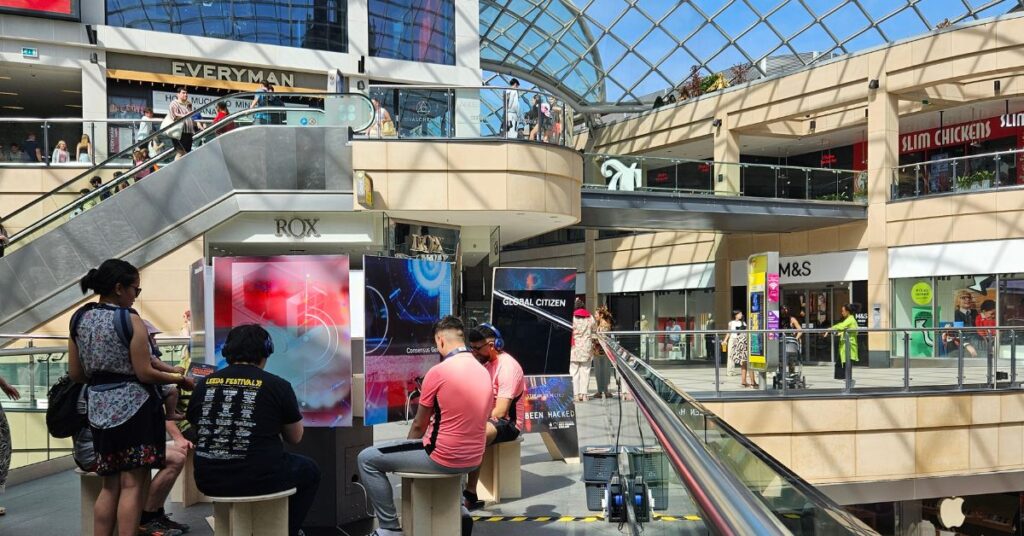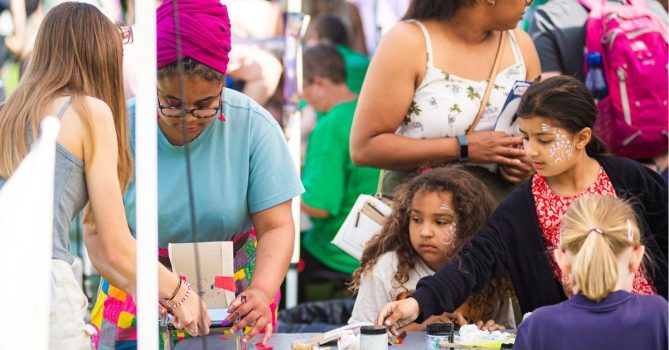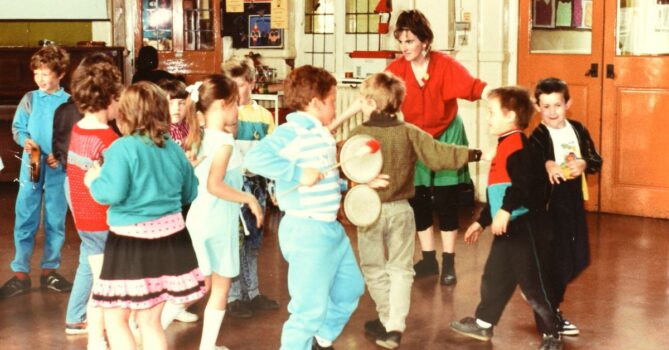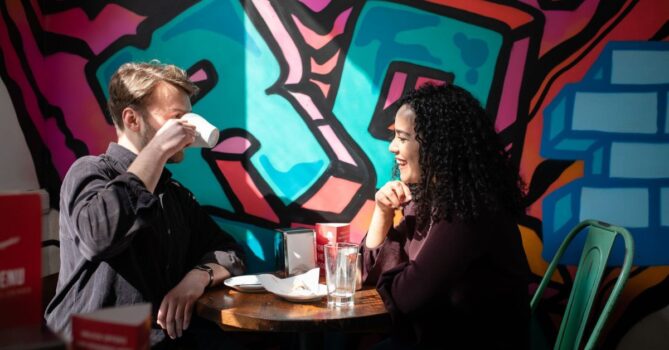Lessons of touring immersive work beyond arts venues

How can immersive art reshape cultural access, foster resilience, and position young people not just as audiences but as co-creators and leaders of cultural change?
The Centre for Cultural Value’s research into cultural sector resilience finds a compelling case study in the touring model of Consensus Gentium, an AI-driven interactive film by Karen Palmer that visited 11 shopping centres across England in 2024.
Produced by Crossover Labs and supported by Arts Council England, the tour placed a mobile, AI-driven installation directly into urban shopping centres frequented by 14–24-year-olds, especially those from global majority and working-class backgrounds. As groups less likely to step into traditional cultural venues, this project met its audiences where they were, namely in everyday, urban public spaces.
The aim of the tour was not only about greater inclusion of young and urban audiences, but also an opportunity to understand how these audiences respond to emerging forms of entertainment. Through facial recognition and eye-tracking, Consensus Gentium asks audiences to question systems of surveillance and control. Audiences are invited to actively shape the story, foregrounding the young people taking part as agents of resistance, not passive observers.
A new toolkit for touring immersive work
Dr Rob Eagle, Research Fellow at the Centre for Cultural Value, conducted field research and interviews throughout the tour. This research highlighted the importance of place, flexibility, local networks, and empathetic design in building sustainable, audience-centred models.
The findings have resulted in a toolkit that Rob developed alongside the artist and producers of Consensus Gentium. The toolkit provides practical guidance for cultural producers looking to engage underserved youth audiences and adapt immersive work to non-traditional venues.
As cultural ecosystems evolve, the tour of Consensus Gentium demonstrates how embedding equity and innovation into cultural practice can create new paths to resilience led by young people who are ready not just to consume culture, but to co-create and redefine it.
More about cultural sector resilience
Ben Walmsley writing for Arts Professional: What would a regenerative cultural sector look like?
Stephen Dobson writing for Arts Professional: Reimagining cultural data
Related news

Rethinking Audience Spectrum through a cultural vitality lens

Junction Arts: Fifty years of creative placemaking

Working internationally with The Arts Impact Partnership

Taking the courage to pause

Understanding and measuring cultural vitality in the UK




